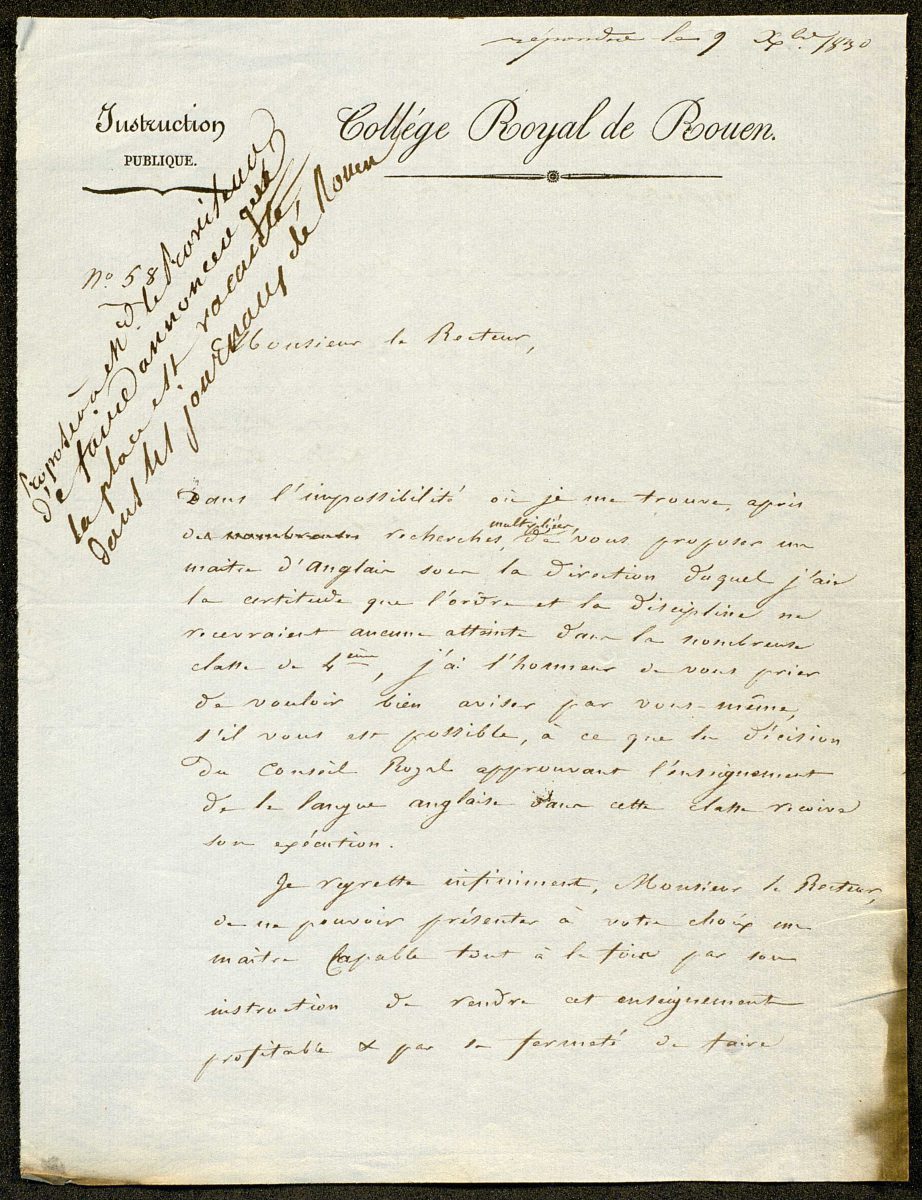Shortly after the Royal Council for Public Education had given its approval to the teaching of English, the Collège royal de Rouen, the forerunner to the Lycée Corneille, wrote to the rector complaining of difficulty in finding a qualified teacher.
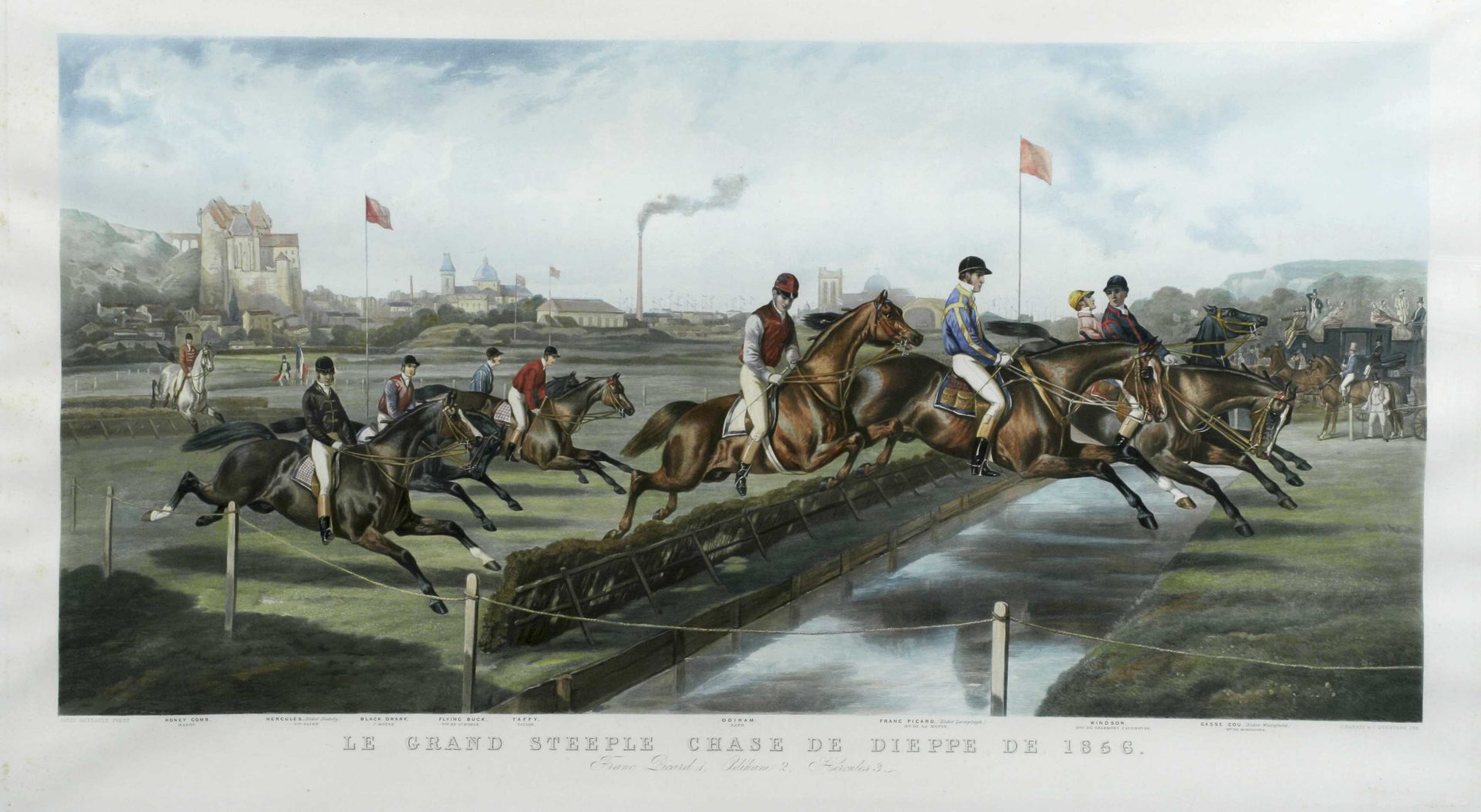
The grand Dieppe steeplechase by Louis Heyrault, lithography
Dieppe followed the English fashion for horse-racing, opening a racecourse as early as 1852 at which steeplechases were held. Followers of horse-racing were known as “sportsmen”, while the word “sport” was used in France only to describe horse-racing, as in the definition given in the 1883 edition of the Littré dictionary.
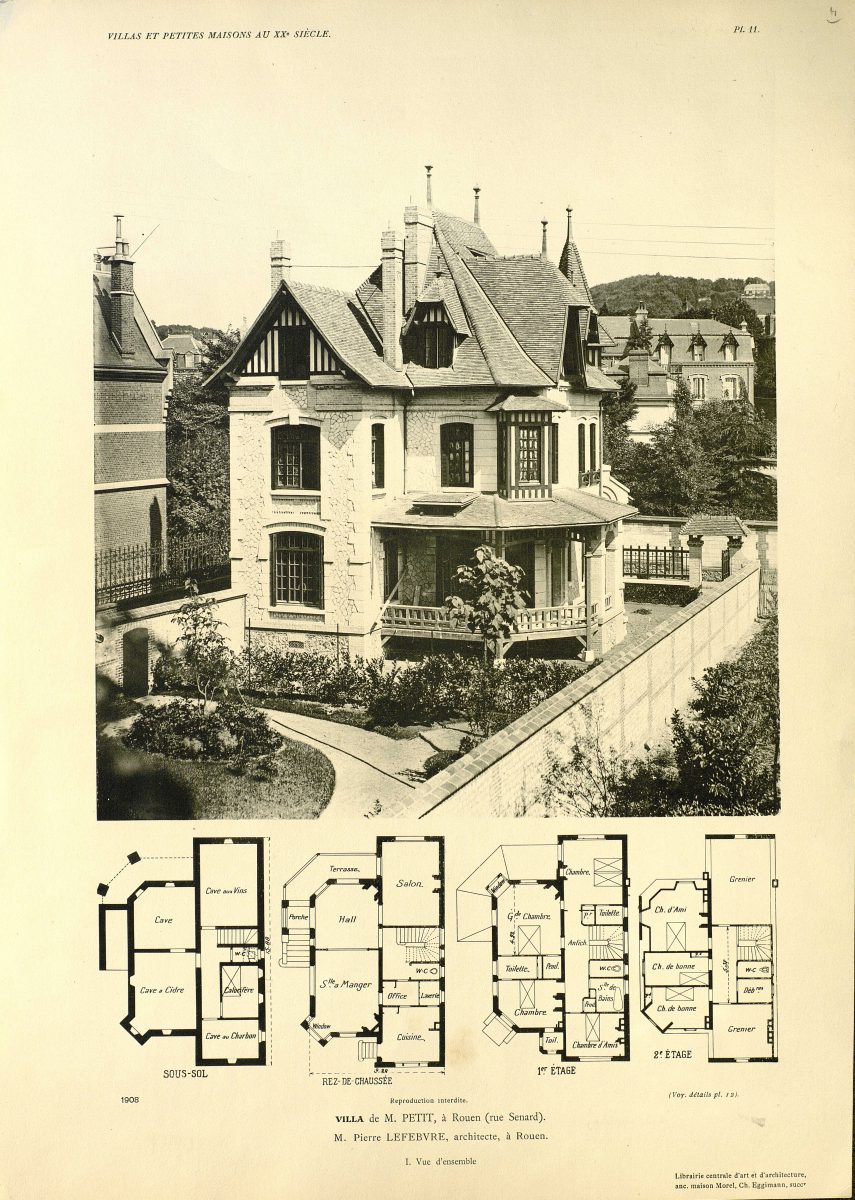
Rouen, villa in the rue Senard, architect P. Lefebvre. Printed plate taken from “Villas et petites maisons du XXe siècle”, Paris – Central Art and Architecture Library
This middle-class home shows how influential the regionalist trend was both in towns and at the seaside.
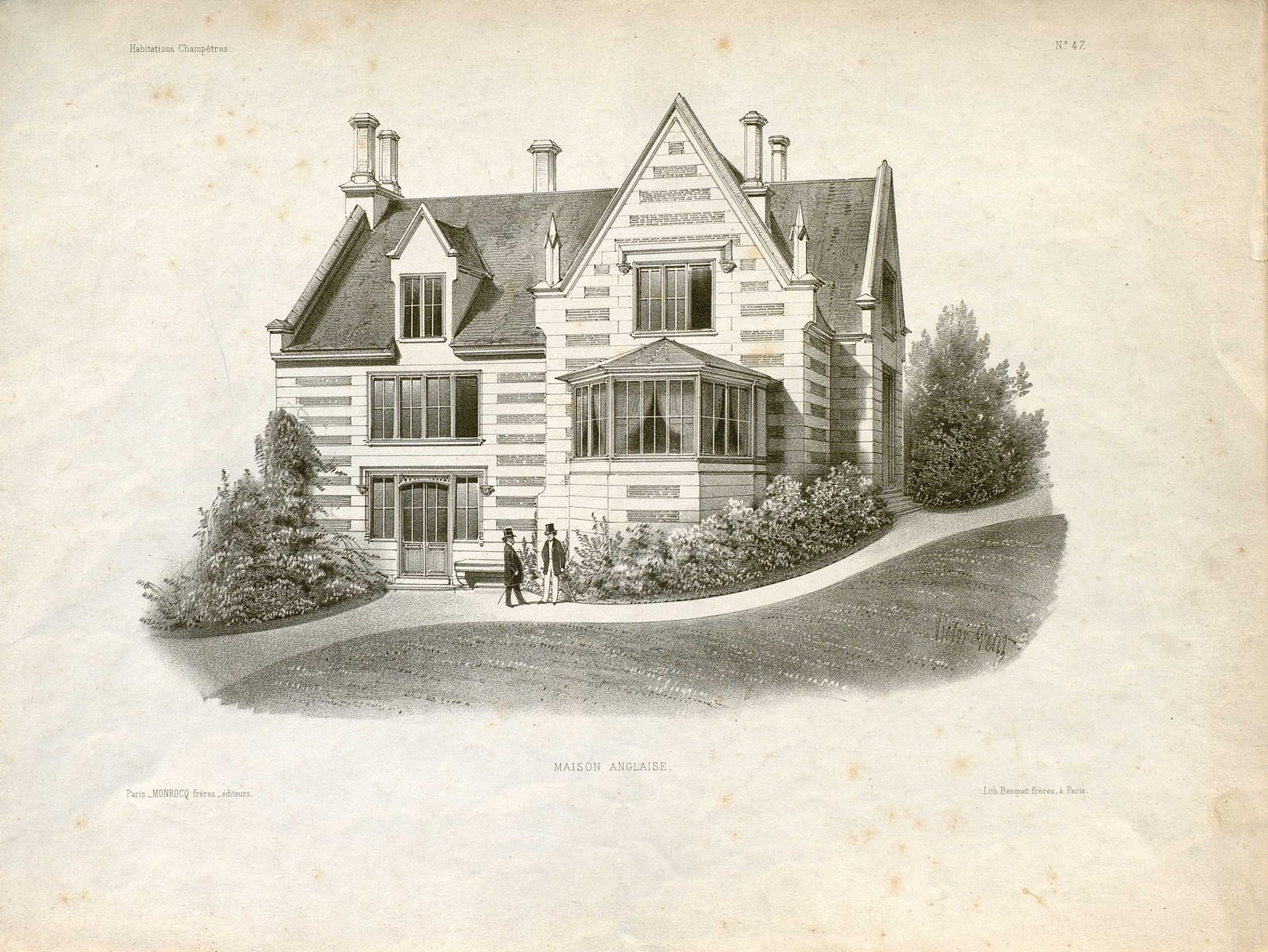
English house. Plate taken from “Habitations champêtres” by A. Petit
Books containing architectural plates became increasingly popular in the second half of the 19th century.
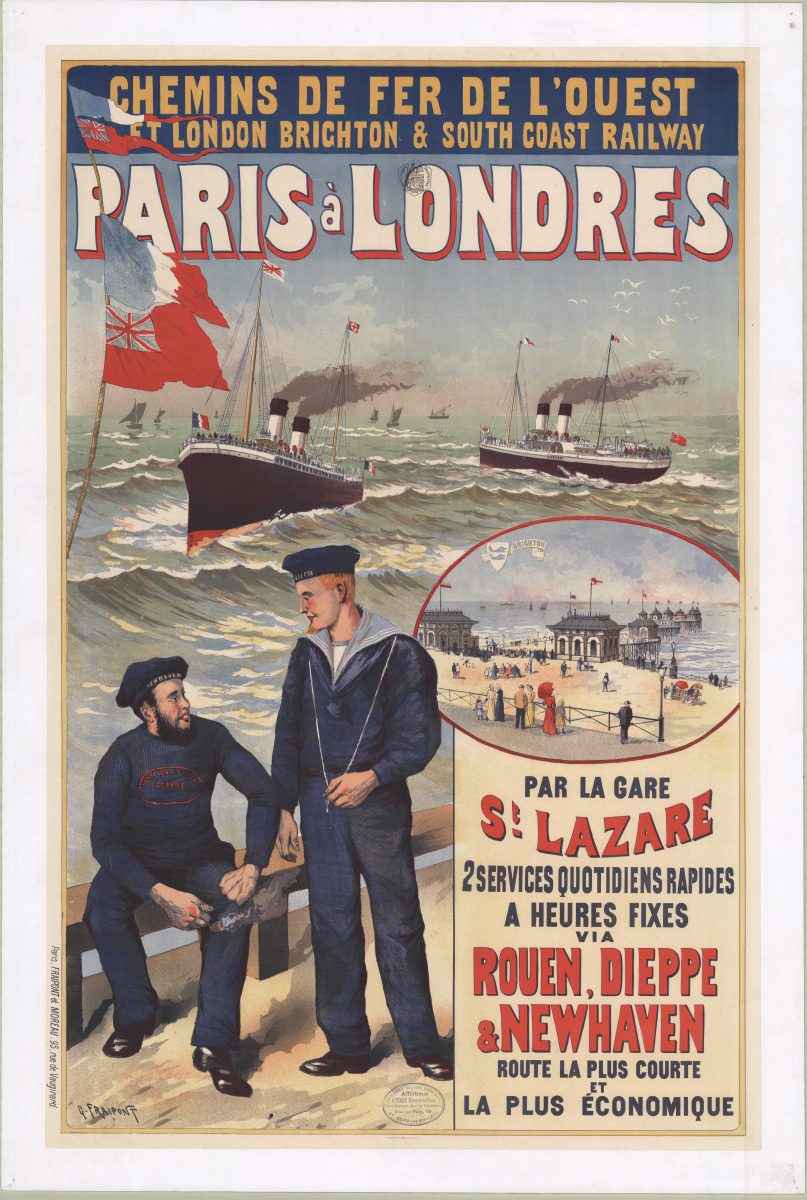
Chemins de fer de l’Ouest et London Brighton and South Coast Railway Illustrated colour poster
The earliest tourism posters were produced for the Compagnie des Chemins de fer del’Ouest in 1886, with towns and tourist offices following this example later on.
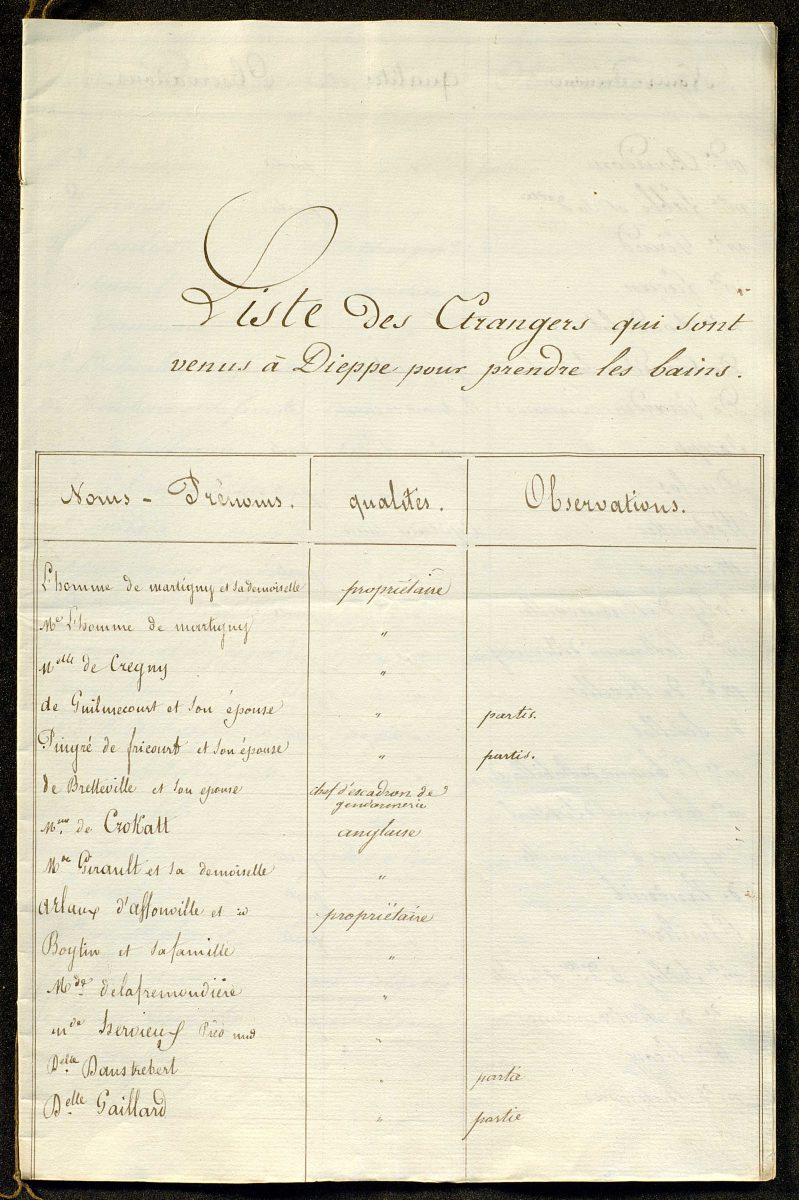
List of foreigners travelling to Dieppe for sea-bathing
Sea-bathing became fashionable in Normandy in the 19th century, following the trend set in England by Brighton.

